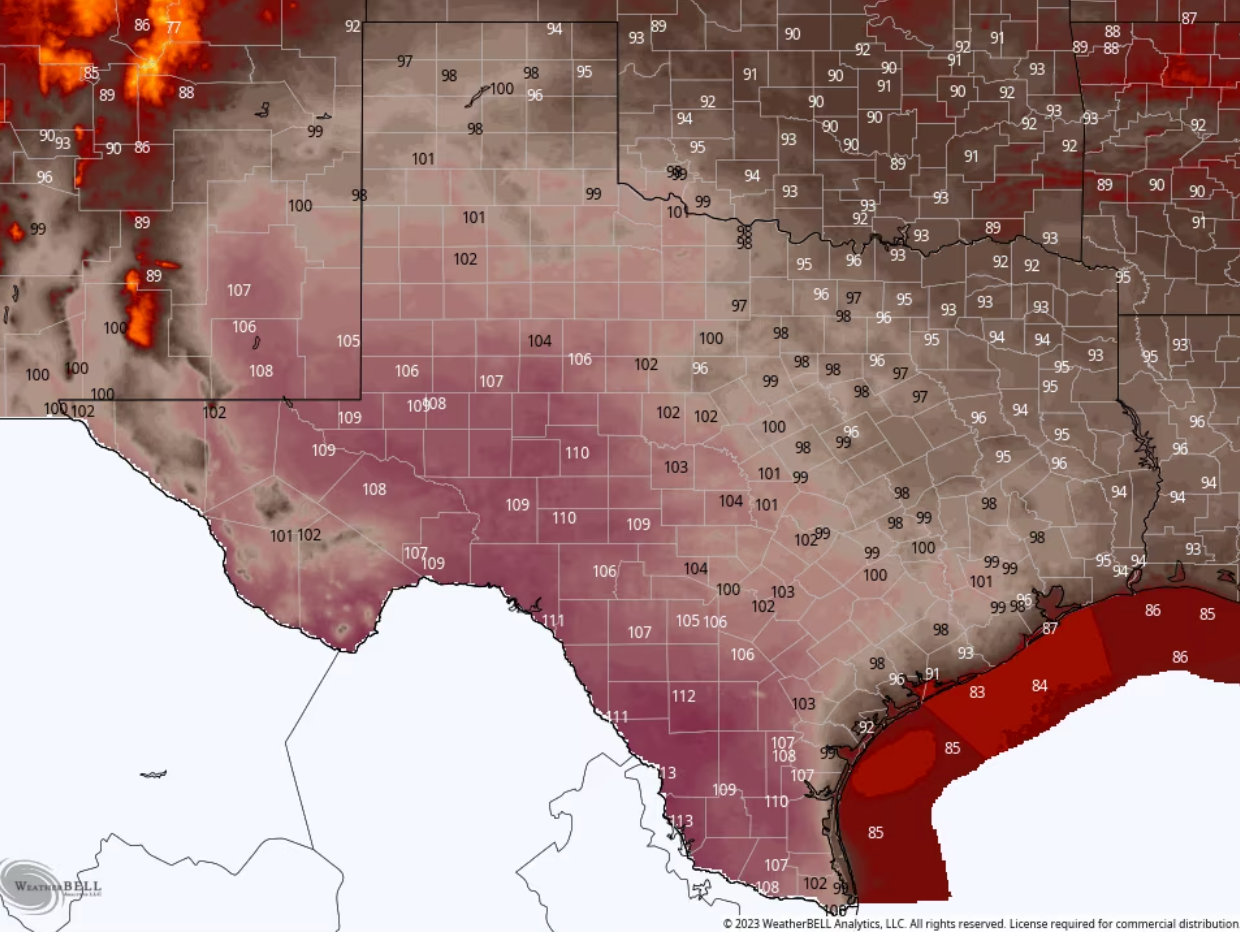Texas grid expects record power use as brutal heat continues
The city of San Angelo hit 112F on Tuesday, breaking its all-time high of 111F
Your support helps us to tell the story
From reproductive rights to climate change to Big Tech, The Independent is on the ground when the story is developing. Whether it's investigating the financials of Elon Musk's pro-Trump PAC or producing our latest documentary, 'The A Word', which shines a light on the American women fighting for reproductive rights, we know how important it is to parse out the facts from the messaging.
At such a critical moment in US history, we need reporters on the ground. Your donation allows us to keep sending journalists to speak to both sides of the story.
The Independent is trusted by Americans across the entire political spectrum. And unlike many other quality news outlets, we choose not to lock Americans out of our reporting and analysis with paywalls. We believe quality journalism should be available to everyone, paid for by those who can afford it.
Your support makes all the difference.The Texas grid operator was expecting to hit record electricity use on Wednesday as the state battles prolonged, brutal heat.
The heatwave is expected to persist across much of Texas along with eastern and southern parts of New Mexico possibly into next week, according to the National Weather Service (NWS).
Houston, the state’s largest city, will reach 99 degrees Fahrenheit (F) on Wednesday – six degrees hotter than normal for this time of year, forecasters said.
In south and west Texas, temperatures soared into the triple digits. San Angelo hit an all-time high of 114F on Tuesday, NWS reported.
Combined with humidity, temperatures will feel like 120F across parts of Texas, a dangerously high level for human health.
The Electric Reliability Council of Texas (ERCOT), which provides power for most of the state’s 30 million people, asked residents to conserve electricity on Tuesday to prevent blackouts. Texas set an unofficial June record on Monday for energy demand.
The Lone Star State’s grid has been watched warily since a severe winter storm in February 2021 knocked out the power for days and left 137 people dead.
Texas’ Republican Governor Greg Abbott has tried to reassure Texans that improvements have been made to make the grid more stable.

Tens of thousands of people in the south were already attempting to cope with the extreme heat unable to power air conditioning and other devices. Some 28,000 customers were currently experiencing outages in east Texas close to the Louisiana border, according to utility tracker poweroutage.us.
More than 30,000 residents in Louisiana have been without power for days following severe weather which damaged more than 800 structures around Shreveport alone, according to Mayor Tom Arceneaux. Officials said more than a dozen major transmission lines were still awaiting repairs.
In neighbouring Oklahoma, more than 100,000 customers were also awaiting restoration of power following weekend storms that downed trees and snapped hundreds of utility poles. Officials say at least one person in Oklahoma has died because of the prolonged outages, which could last into the weekend for some residents.
An “intense” supercell was expected to develop late on Wednesday afternoon across southwest Kansas into the Texas and Oklahoma panhandles with very large hail, severe wind gusts and a few tornadoes possibles,
Meanwhile, the risk of wildfire has increased across much of New Mexico and parts of eastern Arizona over the next few years due to the heat, arid conditions and high winds.
The climate crisis is having a direct and extreme impact on heatwaves that scientists expect to continue as the global average temperatue continues to rise. Global heating currently causes rare heat waves to be 3 -5F warmer across most of the US, according to Climate Signals.
With reporting from The Associated Press




Join our commenting forum
Join thought-provoking conversations, follow other Independent readers and see their replies
Comments